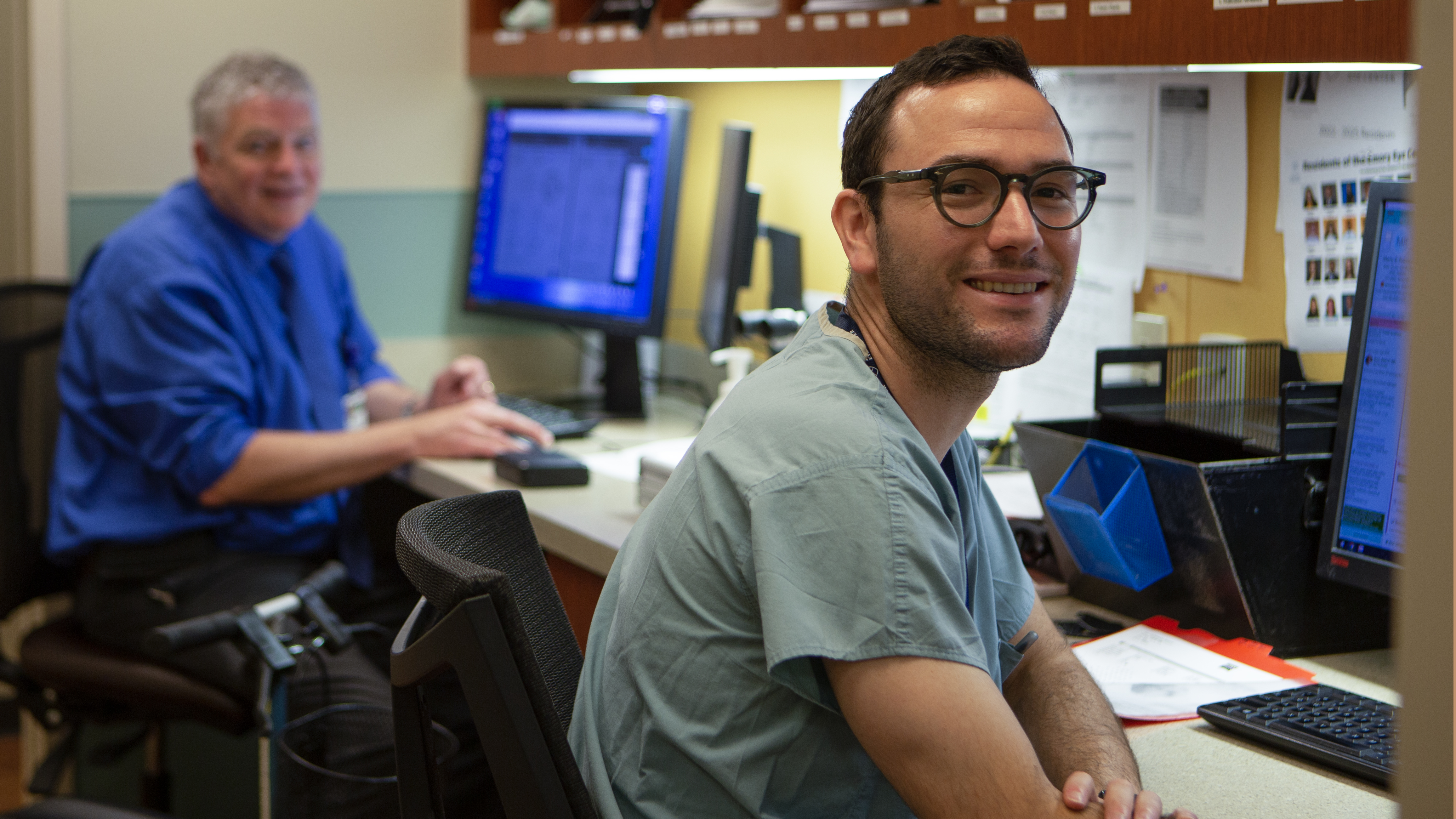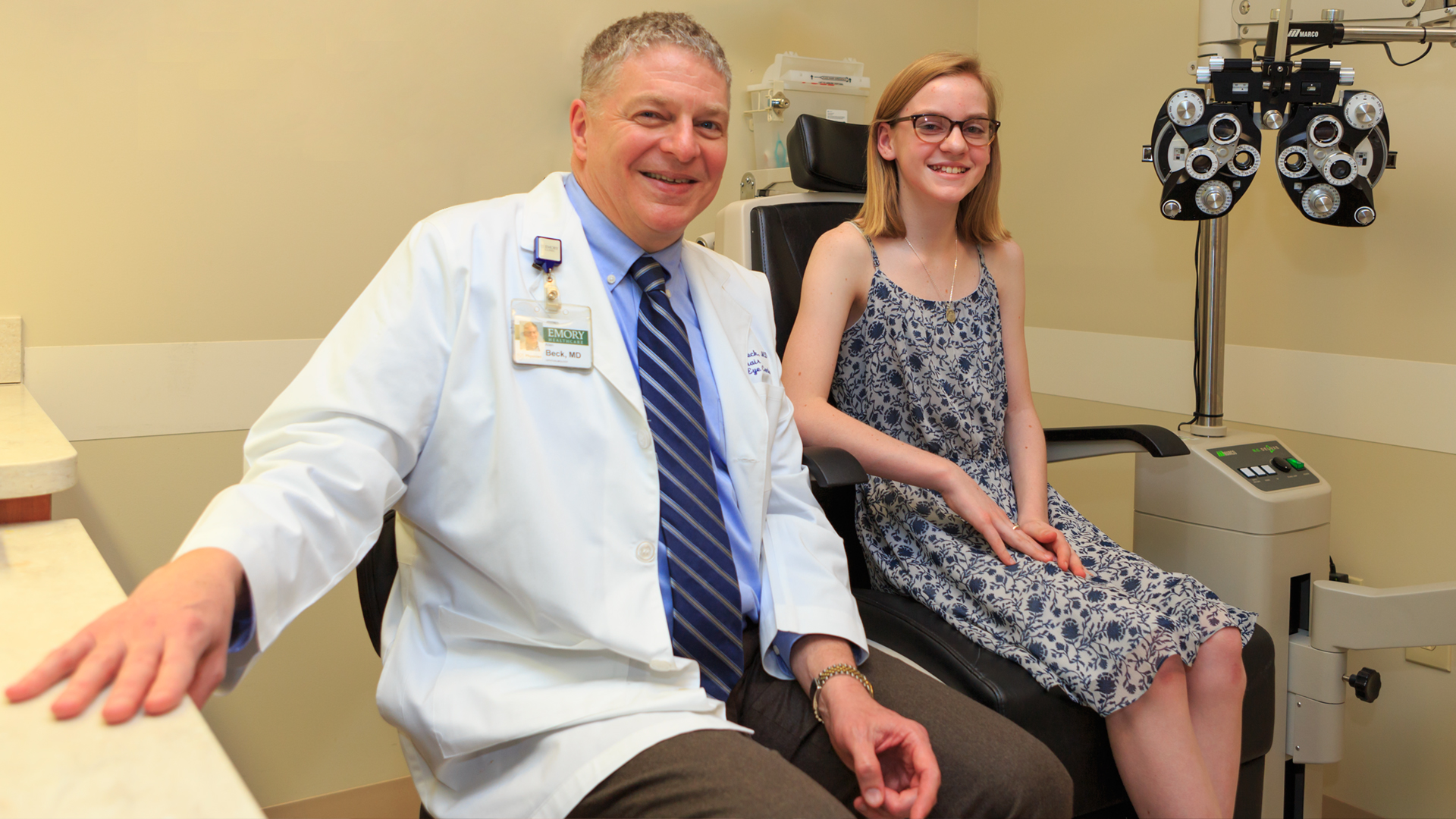It begins with a commitment to treatment

Glaucoma is a group of diseases that can damage the eye's optic nerve and result in irreversible vision loss and blindness. After cataracts, it is the leading cause of blindness in the world. It is the number one cause of blindness in African Americans.
Glaucoma is present when the normal fluid pressure inside the eyes slowly rises. Increased intraocular pressure damages the optic nerve, which is responsible for transmitting images to the brain. If the elevated eye pressure continues, glaucoma will worsen a patient's vision. Without treatment, it can cause blindness within a few years.
Diagnosing glaucoma
All Emory Eye Center clinicians are trained to screen for glaucoma using a quick and painless dilated eye exam. The test assesses the patient’s vision and optic nerve. In addition, a tonometry procedure can be performed to measure eye pressure and visual field testing may be included to check peripheral vision.
The Emory Eye Center follows the recommendation of the American Academy of Ophthalmology in calling for ophthalmic eye exams every two years for certain at-risk individuals, including anyone over the age of 65, people with a family history of glaucoma, African Americans and Latinos over the age of 40, people who have experienced a serious eye injury, and those with diabetes.
Treating glaucoma
The Emory Eye Center has long been involved in the development of new treatment responses, including drug delivery and clinical trials. Current treatment modalities employed by our clinicians include prescription eye drops, laser surgery, or microsurgery.
Eye drops either reduce the formation of fluid in the front of the eye or increase its outflow. Clinicians are trained to screen for possible side-effects and to fully investigate other medical conditions that may interfere with eye drops or any other treatment.
Laser surgery slightly increases the outflow of the fluid from the eye in open-angle glaucoma and eliminates fluid blockage in angle-closure glaucoma. Residents and fellows gain direct experience in all forms of laser surgery, including
- trabeculoplasty - a laser is used to pull open the trabecular meshwork drainage area
- iridotomy - a tiny hole is made in the iris, allowing the fluid to flow more freely;
- cyclophotocoagulation - a laser beam treats areas of the ciliary body, reducing the production of fluid.
Microsurgery. Residents and fellows are introduced to microsurgery, a procedure in which new channel is created to drain fluid, thereby reducing intraocular pressure. Sometimes this form of glaucoma surgery fails and must be redone. Other complication of microsurgery for glaucoma include some temporary or permanent loss of vision, as well as bleeding or infection.
The Glaucoma Fellowship
Each year, the Eye Center invites one to two practicing ophthalmologists into our glaucoma fellowship program. Find out more.


